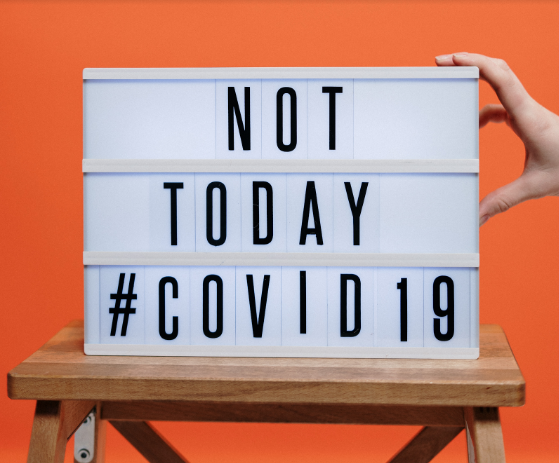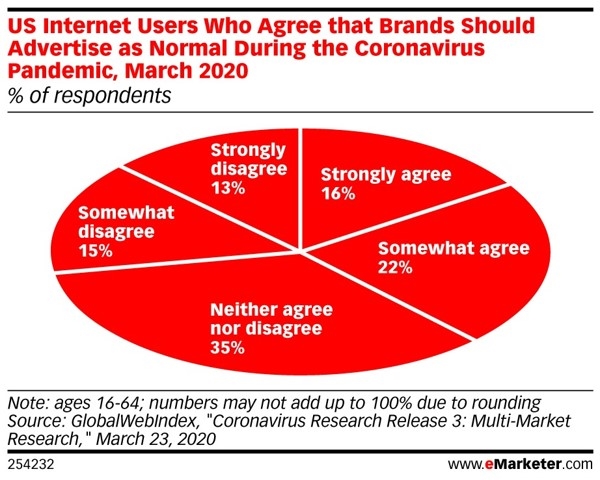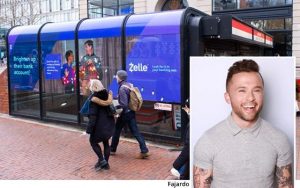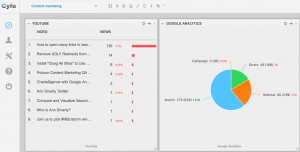Five steps to help your business stay in the game as the COVID pandemic plays out
The COVID-19 pandemic has abruptly disrupted every aspect of business operations, leaving many companies scrambling to craft an effective strategic response. In the wake of the crisis, it seems as though we’ve been hit with an overabundance of information and news content focused on doom and gloom. In order for businesses to remain effective and competitive during this epidemic, the focus must be shifted away from fear and towards being proactive. It’s been incredible to see how many brands have been able to spin the narrative already.
We’ve re-imagined the five-step approach1 crafted by management consulting firm McKinsey & Company, and applied it in ways relevant to the “new normals” in marketing and advertising to help businesses prepare for the future.
1. Resolve
Companies looking to soldier on must begin by addressing any immediate challenges they are facing as a result of the COVID-19 crisis. Plans must be escalated to facilitate both continuity of business operations and the health and safety of employees and customers. There must be a common sense of resolve to get things back on track and remain top of mind among your customers as much as possible. Many retailers have done an exceptional job of this through new business collaborations, new ways of servicing customers, new product offerings, and more. Take Airbnb for example – a company whose business is stapled in travel. They’ve been offering up virtual visits with dogs in Chernobyl, cooking with a Moroccan family, and meditations with buddhist monks in Japan2. This type of resolve is something that isn’t just here for the time being, but likely to remain even after things get back to “normal.”

2. Resilience
Resilience is no longer an option—it’s a necessity for persevering through these hard times. How resilient are you? How resilient is your business? Now is the time to address any immediate resiliency issues.
Recent research by the IAB found that most companies surveyed reported they had already begun to make changes in their ad spending. Many companies are focusing on decreasing ad spend across the board, but specifically, the billboard. OOH, digital OOH, and terrestrial radio has been substantially cut due to the current context and nature of the pandemic3, but it becomes less about halting all ad spend and more about making necessary adjustments, such as advertising nearby locations that have essential businesses where foot traffic may be higher. However, while there have been large cuts in advertising dollars, a recent survey found that consumers don’t think brands should stop adverting.

Research by advertising analytics firm, Ace Metrix, reported that 86% of US ad viewers were open to brands mentioning COVID-19 in their ads4. Brands should be focused on making sure that whatever they are putting forward around messaging and content is reassuring and fits within the context of the content.
“It’s less about being very commercial and promotional in our messaging and a lot more about how do we really express the heart of this brand.”5 – Marisa Thalberg, Lowe’s VP and Chief Brand and Marketing Officer
It’s evident that brand purpose will be a strong component to messaging during this time.
3. Return
Now is the time to craft a detailed strategy to return business to scale. Businesses looking for a more concrete approach should focus on the following actions:
- Information/Education – Keep employees and customers well-informed and regularly updated on the most recent news about the status of your operations and any potential changes that may affect them.
- Reassurance – Reassure employees and customers that they can trust you during the hard times. Give them confidence in your brand and detail the steps your company is taking to ensure they receive the same level of care they are used to.
- Entertainment – Consider the current climate and context. Focus on messaging related to being homebound and find interesting ways to engage your customers and provide them with novel experiences online. Think of new ways to inform, educate, and interact. For instance, now is the time to start experimenting with new forms of content, such as videos, live streams, or podcasts.
- Loyalty – Now is the perfect time to shift your focus towards cultivating loyalty and long-term relationships. Consumers will continue to seek deals with the threat of a recession, throwing brand loyalty to the wind at times, so concentrating on your current customer base and finding ways to make your customers feel special and cared for is extremely important.
However, this also lends an opportunity to engage new audiences. For instance, several fitness companies such as CorePower Yoga and others are offering certain classes for free to entice new customers to sign up down the road. Others have been offering Instagram Live classes during certain hours of the day while promoting additional subscription models for access to more online classes.
Understanding Location Will Be More Important Than Ever Before
As states begin opening up in different stages and at different times, there are many strategies brands can take to build market share back up. Neighborhood shops and other local establishments may want to target particular customers with personalized offers based on their past visitation behaviors and current whereabouts. By analyzing visitation patterns, restaurants can target their most loyal customers with messaging around “first-dibs” on reservations with limited seating.
Similarly, retailers can offer loyal customers early access to their stores or be the first to book an appointment-only visit. Using geofence technology, sales associates can be alerted that customers are nearby the store and prepare to meet them once they arrive. As well, the customer can get a notification on their phone once they are at the store that the sales associate will be right out. Or maybe retailers want to send limited time offers to those who haven’t engaged with them or visited a store in the past 6 months, but have frequented competitor locations in the past.
It all comes down to creating compelling, differentiated offers, by taking a customer-centric approach and developing a deep understanding of each shopper as an individual, and location can help.
4. Reimagination
Brands will need to begin reimagining the “next normal” and take the appropriate steps to prepare for the future and, possibly, reinvention. The pandemic has brought a lot of things that many businesses had swept under the rug. While some companies are learning a lesson about their vulnerabilities, it doesn’t have to be a bad thing. It can be used as an opportunity to adapt and improve for the future. Perhaps your business operations could benefit from a greater degree of flexibility or efficiency, i.e. BOPIS, curbside pickup, or other contactless solutions. The result will be an increase in strength, resiliency, and productivity.
What will the store experience look like? What will the live event experience look like? The fitness experience, and so on? Nike for one already began reinventing the in-store experience prior to the pandemic with “scan-to-learn” allowing customers to scan a mannequin to learn more about the product6. Models like this will become even more important as retailers adopt more contactless solutions.
5. Reform
Companies should begin thinking about and preparing for the future and how both the regulatory and competitive environments may potentially change. Approaches and strategies will vary greatly between businesses and industries, but the goal should be to ensure that your company comes out better prepared for potential obstacles than it was before.
Brands across all verticals should be prepared for the ways consumers have adapted to the new normal and as such, new channels of communication and shifts in marketing strategies should not be thrown out. In fact, brands will likely continue to use these new channels in creative ways. It’s likely that restaurants will create permanent partnerships with delivery service platforms or expand their geographic reach, and smaller stores will strengthen (or create) an online presence that goes beyond their local neighborhoods.
What Lies Ahead
It’s important to take this time as an opportunity to be proactive, increase your ability to adapt under pressure, and get creative. The pandemic has not brought an end to brick-and-mortar, but the way stores operate will change. Local businesses that have historically relied on foot traffic for their main source of income will need to develop different revenue streams to proof for future scenarios. The digital and physical channels will be even more closely connected as the adoption rate for an omnichannel presence becomes greater.
If ever a silver lining, the way brands have banded together by building on community has opened up more authentic connections with consumers. Now that’s a new normal we can all get behind.
1 COVID-19: Implications for business. McKinsey & Company. April 13, 2020
2 Airbnb has launched Online Experiences so you can meditate with Japanese Buddhist monks and make pasta with Italian nonnas all from home.Business Insider. April 9, 2020
3How Advertisers Are Responding to the Coronavirus Crisis. eMarketer. March 30, 2020
4How Brands are Navigating the COVID-19 Pandemic. Ace Metrix. March 19, 2020
5Lowe’s new CMO on pandemic marketing in the age of social distancing. Ad Age
6Nike’s Heidi O’Neill on the brand’s digital — and coronavirus — strategy. ModernRetail. May 11, 2020
Business & Finance Articles on Business 2 Community
(56)






